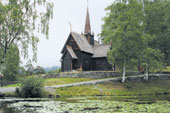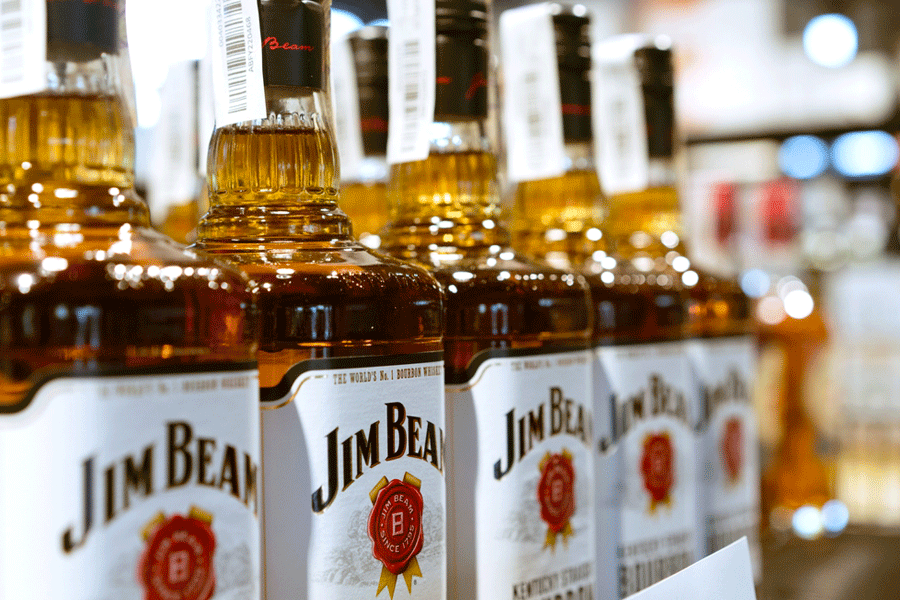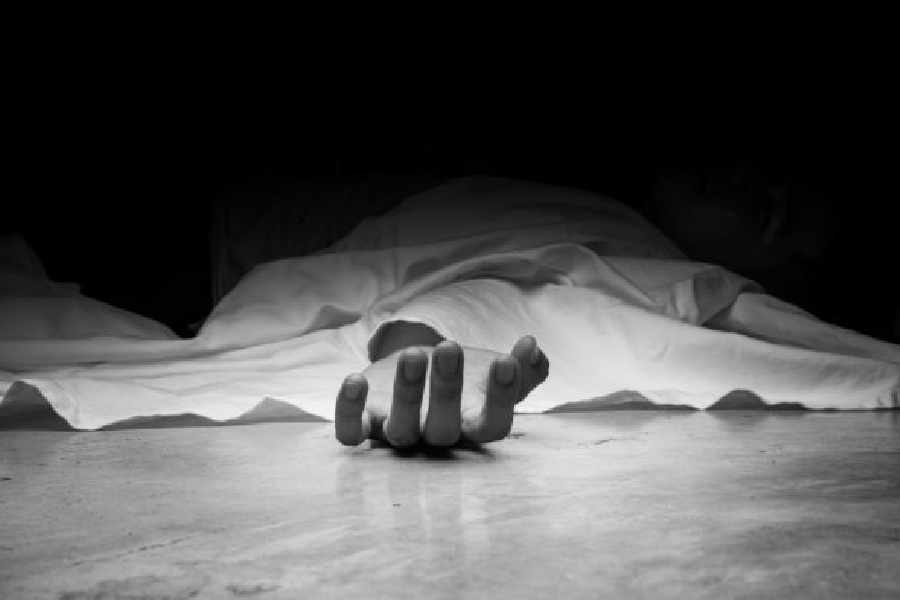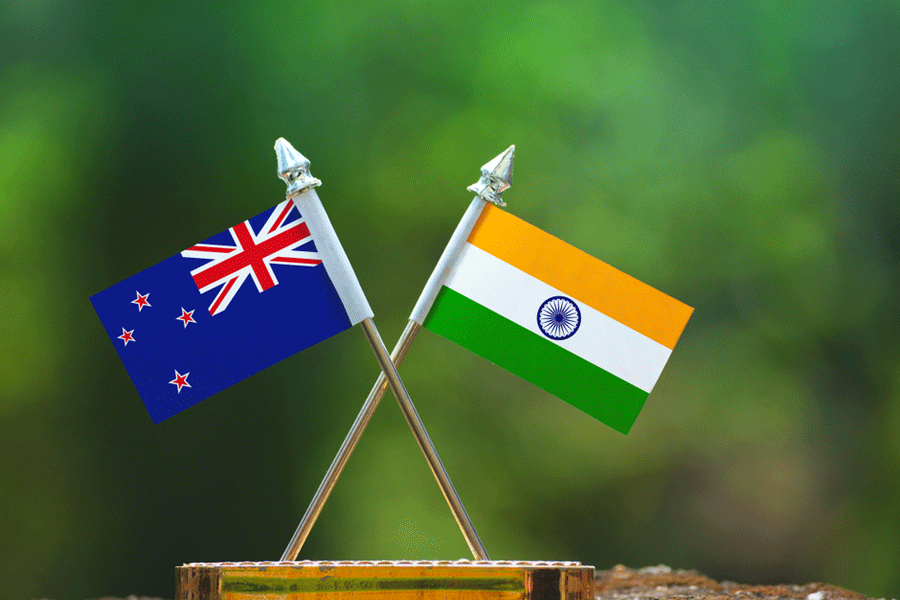 |
 |
 |
 |
| (From top): the Open Air Museum at Maihaugen; a glimpse of the Fram Museum; the imposing Oslo City Hall; the picturesque view in Gudvangen |
I had never heard of trolls before. So it was with great curiosity about this mythical Norwegian creature that my husband and I embarked on our journey to the fairy tale village of Gudvangen in Western Norway . Gudvangen lies at the end of Naeroyfjord –— the narrowest fjord in the world and also the most photographed one. True to its reputation, we found Gudvangen to be a pristinely beautiful hamlet surrounded by misty mountains and crashing waterfalls.
We made Gudvangen Fjordtell our base and it proved to be an imaginative lodge complete with Viking artifacts — battle axes, shields, reindeer skin bedspreads and mock reindeer skulls. It was here that I got my first glimpse of the legendary trolls — a life-sized troll statue that guarded the lodge, fiercely brandished his sword. Trolls are similar to ogres and look like ugly, fearsome creatures with surreptitious tails. On a closer inspection, however, I found the troll-guard quite cute and ungainly.
That evening we went exploring the Magic White Caves nearby. The caves are made of a peculiar white stone called Anorthosite — the only other big source of Anorthosite known to mankind is on the Moon! We walked into the darkness with only the sound of trickling water cutting through the silence. It was freezing inside the cave’s belly and though we wore protective coats and helmets, were thankful when the tour came to an end. The experience inside the cave? In a word: magical!
The next morning we decided to take the rather special Norway in a Nutshell excursion. It’s a unique journey on the Flam Railway that takes one through some of Western Norway’s most spectacular scenery. The train stops for photo-ops at picturesque spots and at one such spot, when we were furiously clicking a waterfall, we were startled by the sudden appearance of a lady in a red dress. And before we knew it, she began dancing to soft Celtic music! Well, we were informed, she was playing Huldra — the mythical she-troll of Norwegian fables. The legend goes that Huldra, the stunning temptress, is a trickster who hides her cow’s tail in order to persuade human males to marry her. If the men don’t treat her right, she turns incredibly ugly and the young husband must repent all his life.
Later that evening, we drove to the famous Stalheim Hotel that perches at the crest of one of Northern Europe’s steepest stretches of road, the Stalheimskleiva. It is a superbly furnished old-style hotel that overlooks a 1,200 feet ravine. At the souvenir shop tourists go ga-ga over an array of memorabilia depicting the Viking era — swords, shields, helmets and statues, and I promptly bought them as keepsakes for my son.
Bidding adieu to charming Gudvangen we headed for the quaint village of Loen . Loen is a beautiful valley, marked by lots of apple trees and Stave churches, which are medieval wooden churches constructed with posts (stave) and beams. Till the 14th century, there were almost 1,000 Stave churches in Norway though today less than 30 survive. Nevertheless Norway remains the only country in northern Europe with wooden churches from the Middle Ages still intact.
What amazed me about Norway? It has to be the implicit trust people have in each other. All along the route to Loen we noticed stalls selling packs of apples. But there was no stall-owners in sight — just a note on the table that said ‘Please pay 10NOK for one packet of apples’. We also encountered this trusting nature at a toll booth on a mountain road. The gate had a placard that said: ‘Please pay 20NOK for using this road’. There was nobody around to enforce the payment. Nor did we see any policemen or security personnel in any of the towns during our stay.
Our first real adventure in Norway was the hike on Briksdalbreen glacier, that’s one of Norway’s largest natural wonders. Armed with helmets, boots, ice sticks and secured with ropes tied to our waists, we heaved ourselves on the ice in a single file on the glacier. The hour long trudge along with the trained guides meant measuring our steps carefully, sometimes jumping over crevices and cracks on the glacier’s slippery surface. We got a bit of a turn when we heard a kind of sudden gunfire followed by pieces of ice crumbling off from a ledge near us. The guide informed us coolly that such ‘mini’ avalanches happened all the time!
Our next stop was Lillehammer, the city that hosted the Winter Olympics in 1994. It is a charming city with a small-town feel to it despite its stylish shops, cheerful restaurants and of course the Olympia Park with its ski-jumps, bobsleigh track and stadia. We made our way to the Sandvig Collection in Norway’s Open Air Museum at Maihaugen. It’s a collection of farm houses, Stave churches and farmyards set in forests. Led by costumed guides we spent hours peeping into old style houses, examining the rustic décor and paintings inside the Garmo Stave church from 1021.
From a rural sojourn to bustling Oslo , the transition was immense. The buzzing cityscape, the lively cafes lining Oslo Harbor and the buzz of people give Oslo a cosmopolitan feel. If you love museums then Oslo is the place for you. At the Fram Museum we gawked at the polar ship, Fram, which was used for Arctic expeditions by explorer Roald Amundsen. The Kon-Tiki Museum houses the balsa raft, Kon-Tiki, that was used by Norway’s famous 20th-century explorer, Thor Heyerdahl.
We spent many hours at picturesque Bygdoy Island admiring the elegant houses and villas inhabited by the rich and famous of Oslo . The Viking Ship Museum at Bygdoy is another must-see as it is home to vessels and artifacts dating to the Viking era. Considered to be Norway ’s priceless treasures, these ships were excavated from three burial mounds in a farmyard area. Also not to be missed in Oslo the Oslo City Hall, the Royal Palace and Parliament.
Our last day in Norway was spent in the historic town of Sandjeford. The town thrived in the late 1800s, being the centre of the international whaling industry. It was also important during the Viking era. The Viking King, Olav Geirstadalv, was buried in the Gokstad Viking ship which was excavated from a grave mound in Sandjeford. In mid-19th century, Sandjeford was also famous as a centre of medicinal baths.
One of the town’s most famous possessions is undeniably Knut Steen’s Whaling Monument, a frozen-in-action sculpture depicting boatmen brandishing harpoons at a whale that is capsizing the boat. That evening, as we sat on one of the benches and watched the Whaling Monument turn slowly on its rotating axis, kaleidoscopic images of Vikings, trolls, whalers and medieval legends flashed before our eyes. A befitting finale to our tryst with Vikings and Trolls.










